When you hear of a bird’s nest, your mind will likely race high up to tree branches. However, not all birds have such hefty ambitions. Many build their nests on the ground where they comfortably lay, incubate their eggs, and eventually bring up their young ones.
We have compiled a list of 27 birds that lay eggs on the ground.
Contents
What Kind of Birds Build Their Nest on the Ground?
From tunnels to crannies, some birds nest on the ground. Here is a look into ground-nesting bird species.
1. Burrowing Owl
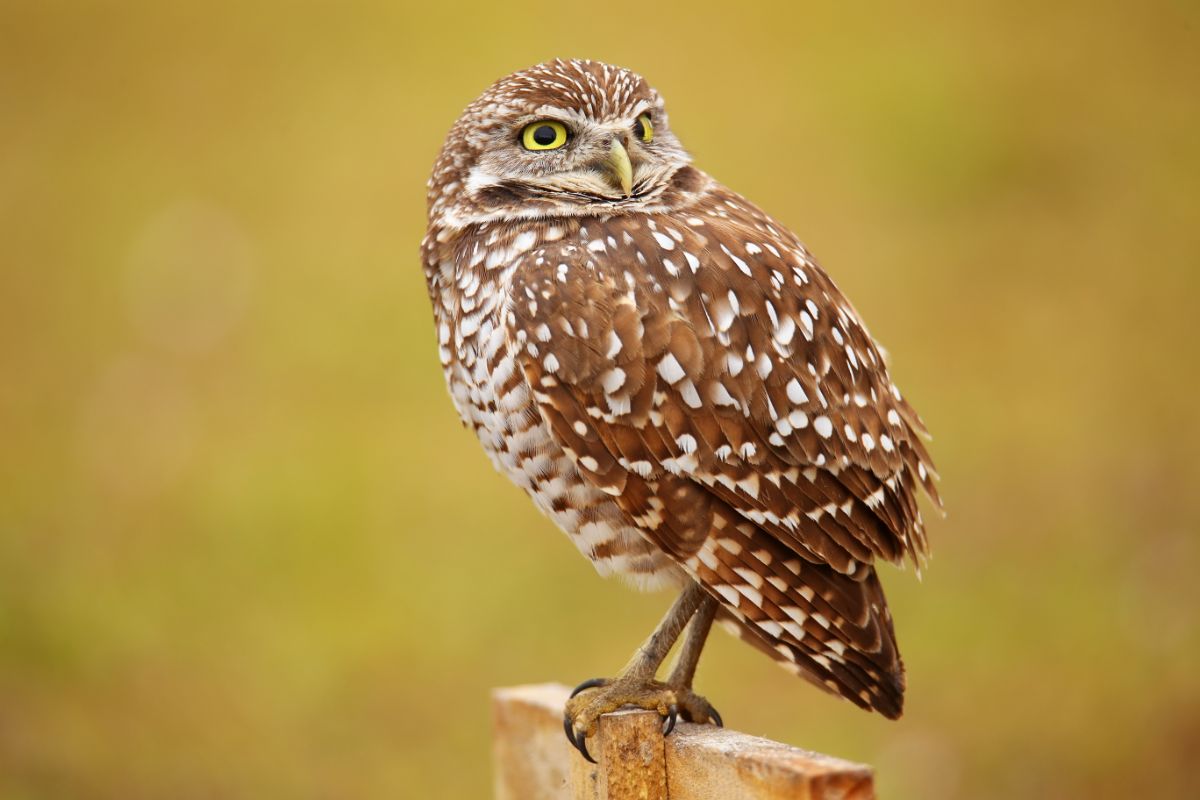
The burrowing owl is the only ground-nesting raptor species in the world. These birds prefer inheriting burrows abandoned by other animals, especially those of prairie dogs. However, burrowing owls dig to create their nests underground when they can’t find one.
2. Common Tern
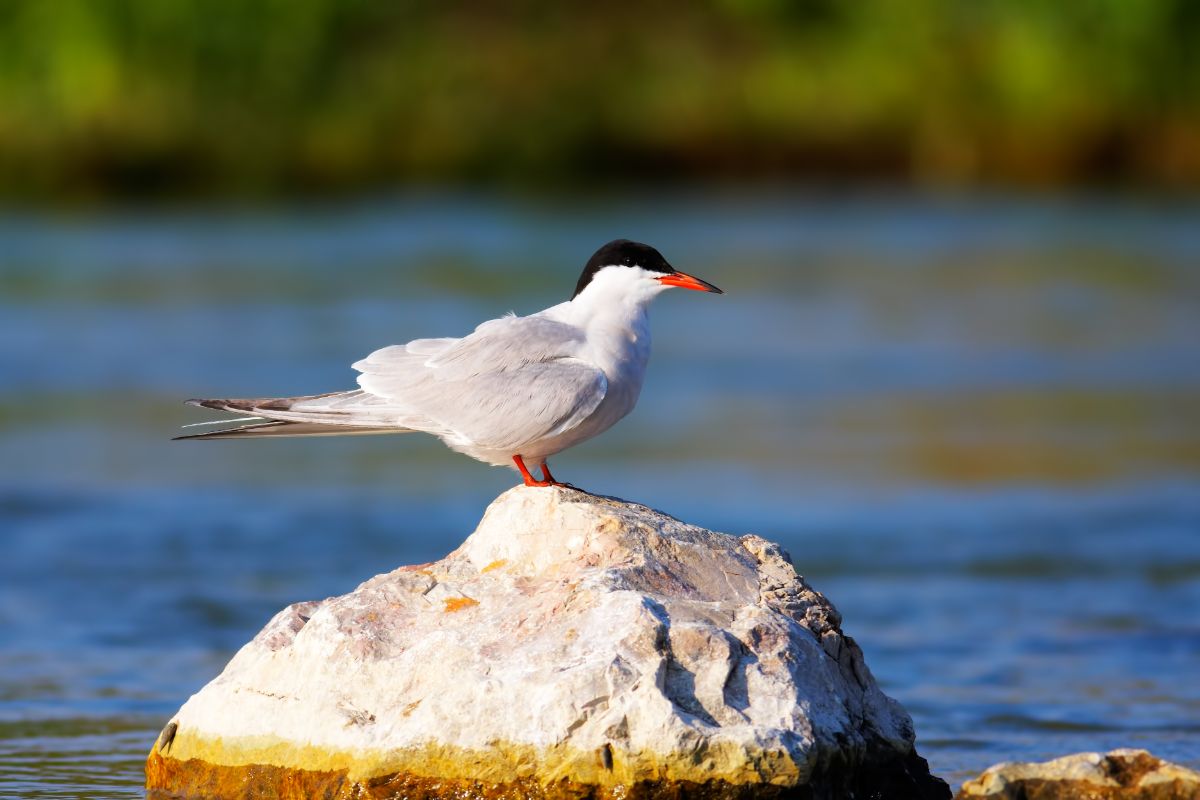
To provide cover for their chicks, common terns prefer picking areas with scattered vegetation for their nesting. You’ll commonly find them nesting in colonies on gravel, shells, and sand very close to water. To create a nest, they scrape on the ground and add bone fragments, stones, shells, and vegetation.
3. Whip-Poor-Will
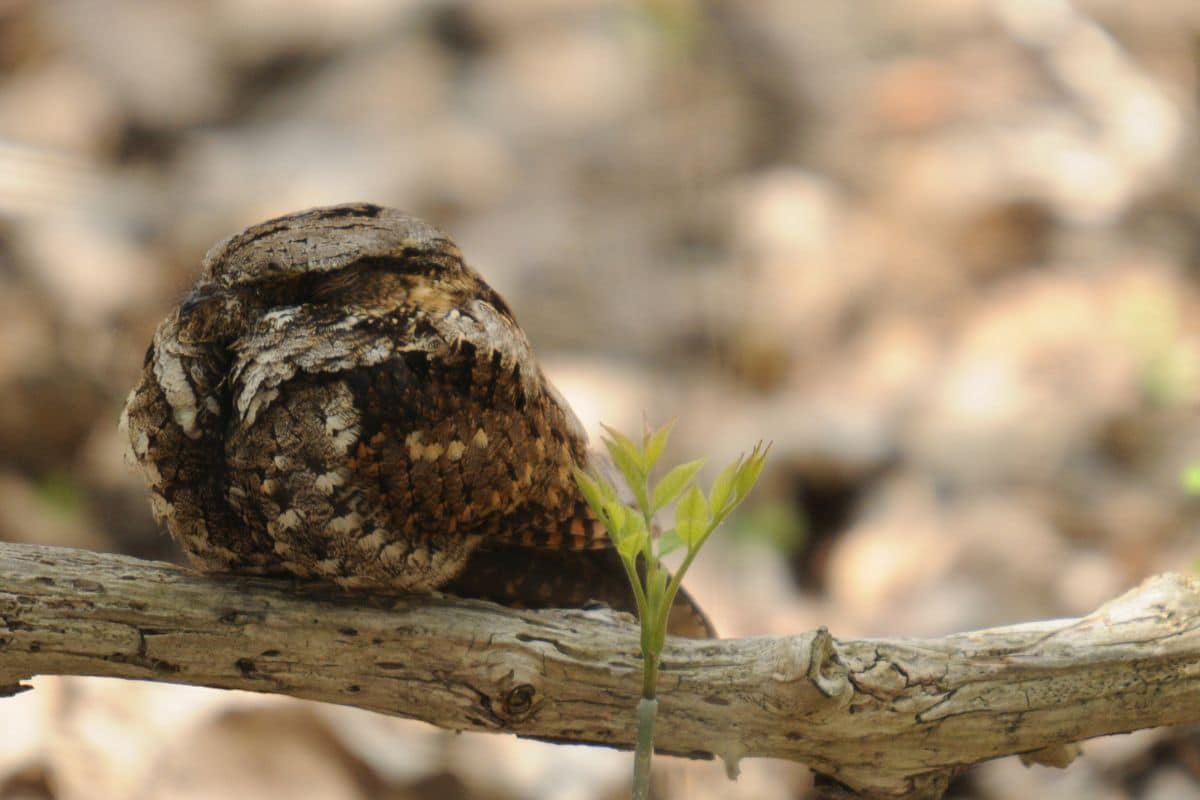
Whip-poor-will takes simplicity to a whole new level. Its nest consists of a slight scrape in the ground, and that’s all. It neither has a placement of mud or rock nor crafting plant materials. A whip-poor-will lays its eggs directly on the ground, whether on leaf litter, stone, or sand.
4. Eastern Towhee
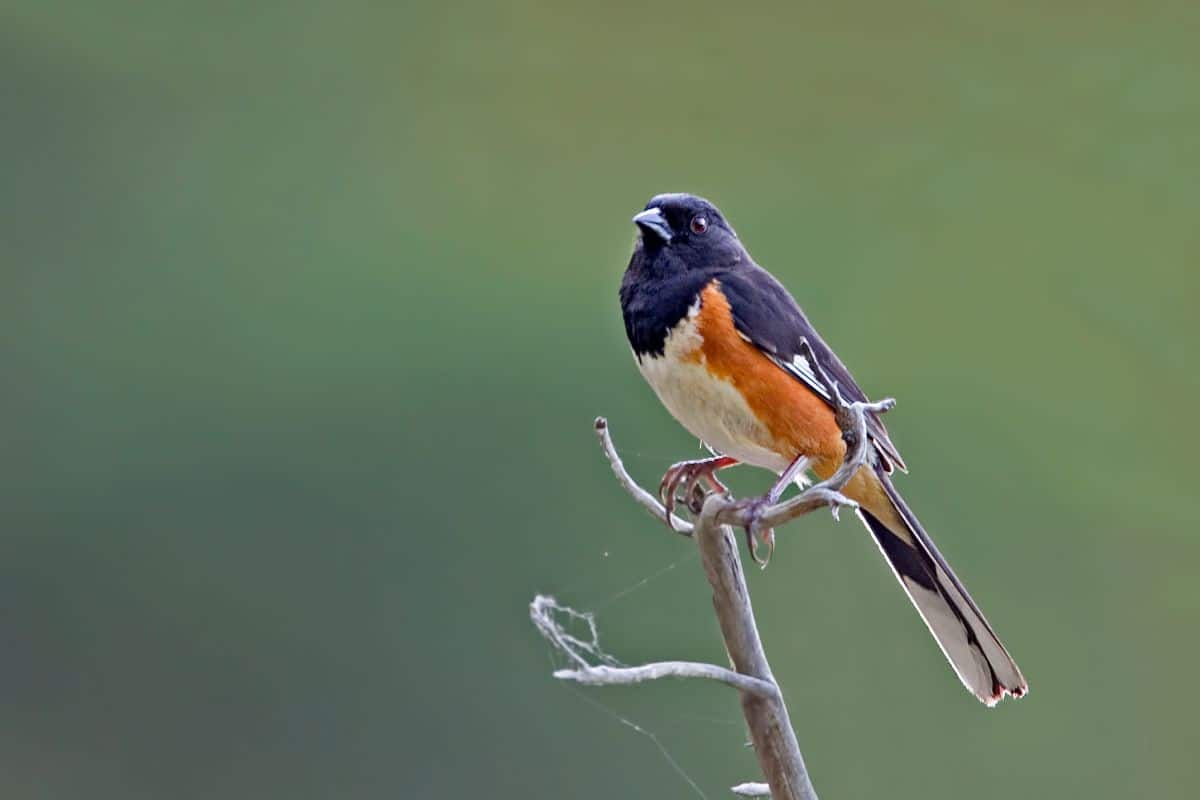
The eastern towhee builds its nest in a cavity or depression on the ground, often among leaves and grasses. It can also nest on a bird box, rock ledge, fallen tree trunk, or an artificial site like an old board.
5. Hermit Thrush
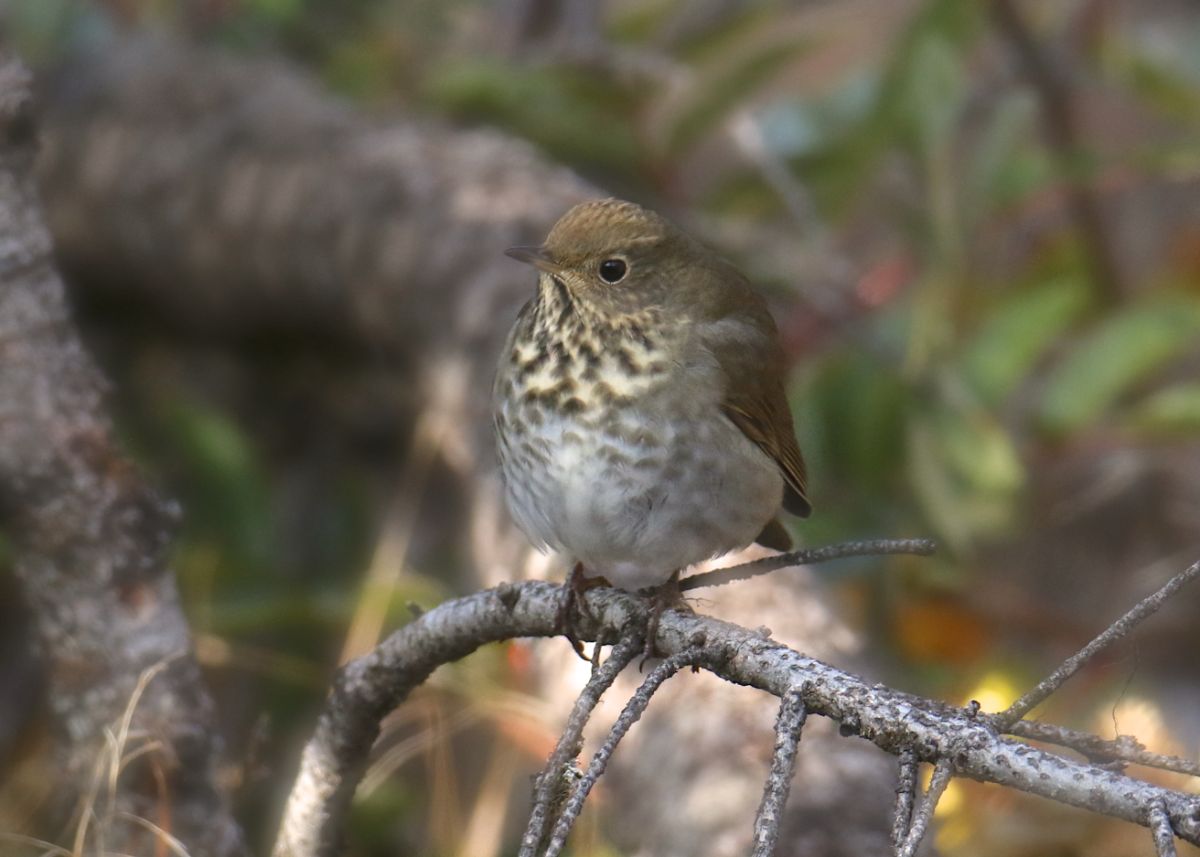
The hermit thrush is among North America’s most widely distributed forest-nesting migratory birds. It prefers a nesting site on ground pine or in a patch of lycopodium.
They lay between three and five eggs, after which incubation takes 12 days. The male hermit thrush defends the nesting territory by singing.
6. Orange-Crowned Warbler
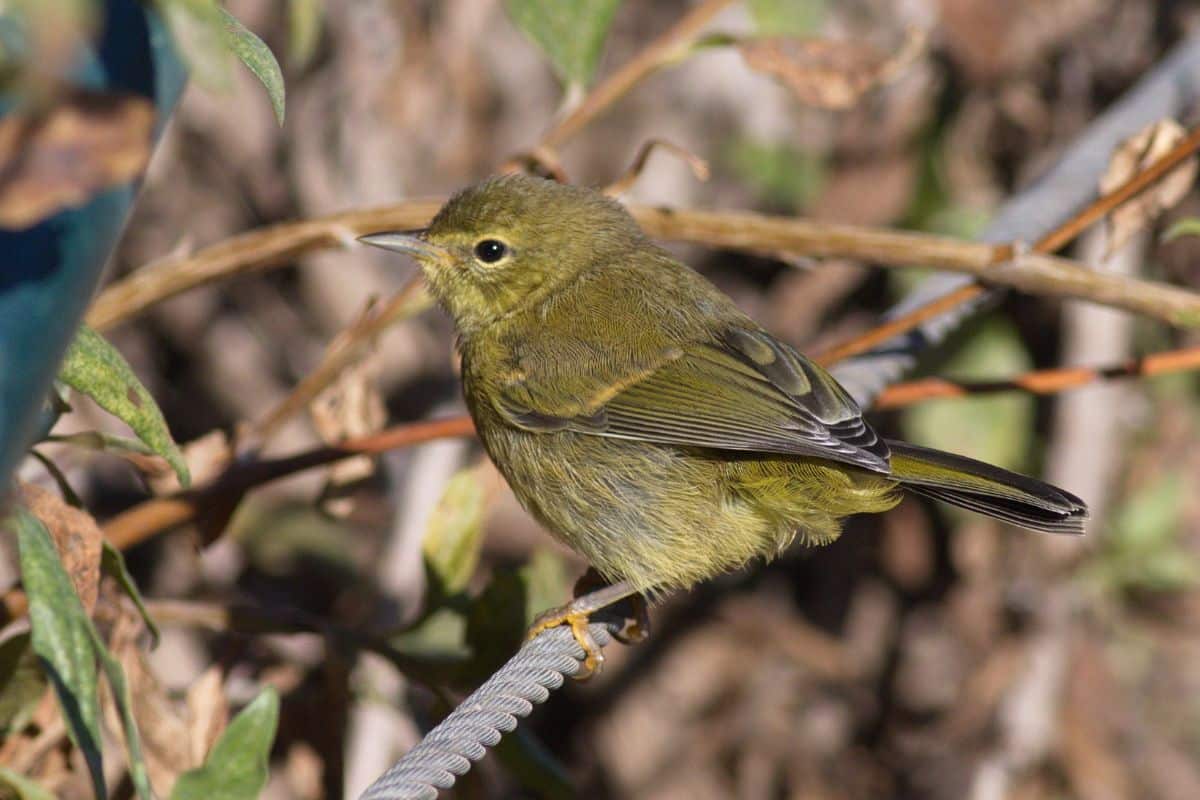
The orange-crowned warbler is a little bird that prefers nesting in areas covered by vegetation. You’ll mostly find them nestled in fern fronds, on moss, or in rock cracks. Their nests feature a leafy foundation with a woven outer layer of wool, moss, stems, bark, twigs, or leaves.
7. Common Yellowthroat
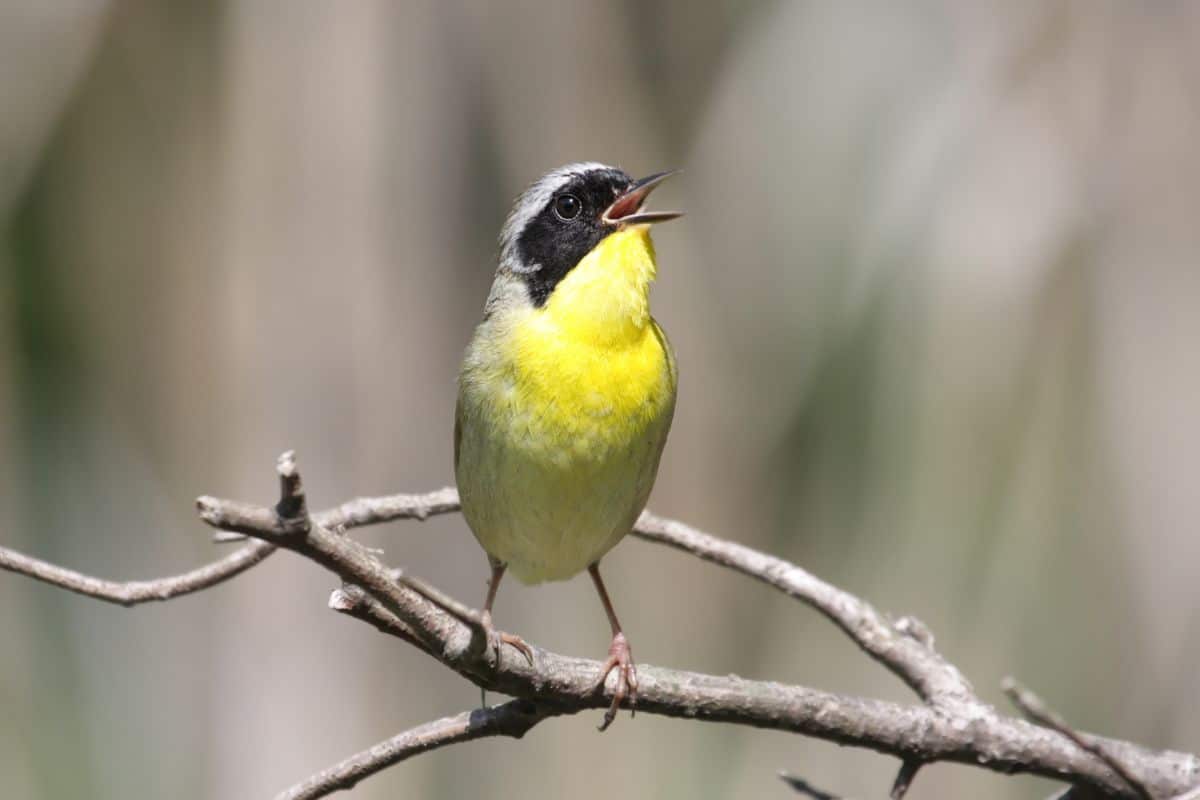
The common yellowthroat is a small songbird. Male common yellowthroats are usually more brightly colored than their female counterparts.
They commonly nest near wetlands, marshes, and other moist habitats. These ground nesters typically use natural cavities, including tree holes and hollow logs, for nesting during summer.
8. Scaled Quail
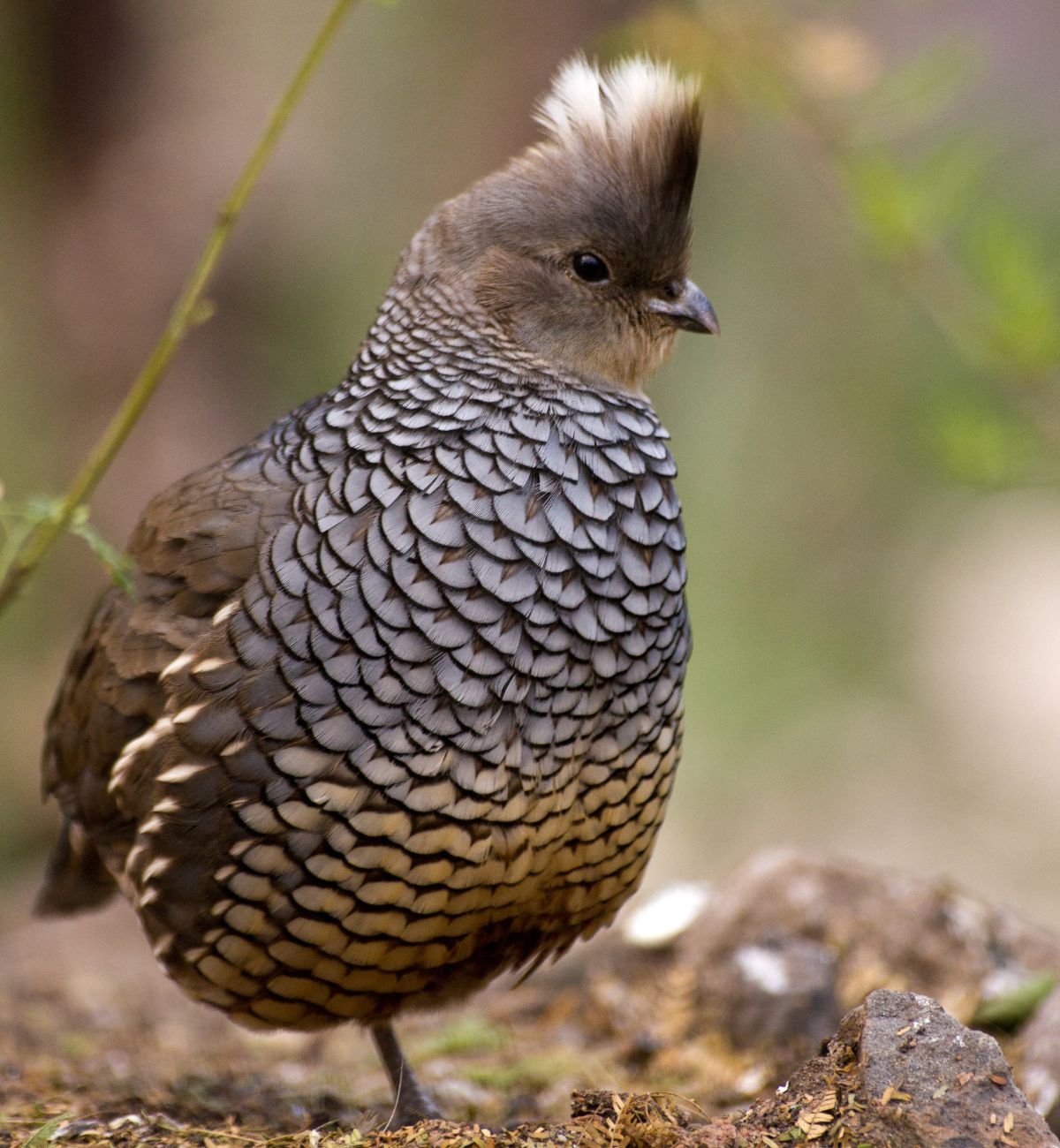
Scaled quails build their nests in places with good ground cover, including areas with small trees, yucca, cactus, and shrubs. You’ll also find them nesting under agricultural equipment placed near a farm. Their nests tend to be simple and made of grass and leaves.
9. Grasshopper Sparrow
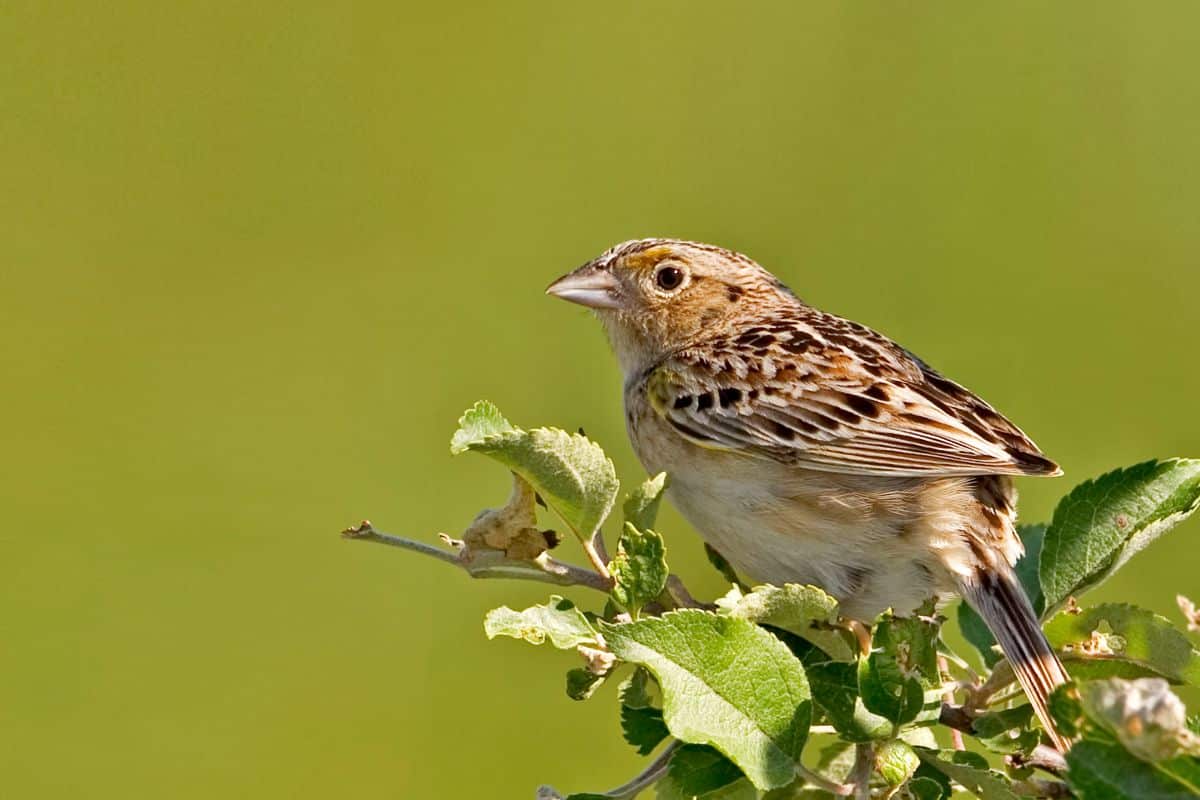
These little birds lay their eggs on the ground and rely on concealment for protection. They build a nest of twigs, leaves, grasses, and bark lined with fur or feathers to protect themselves from predators.
10. Ruffed Grouse
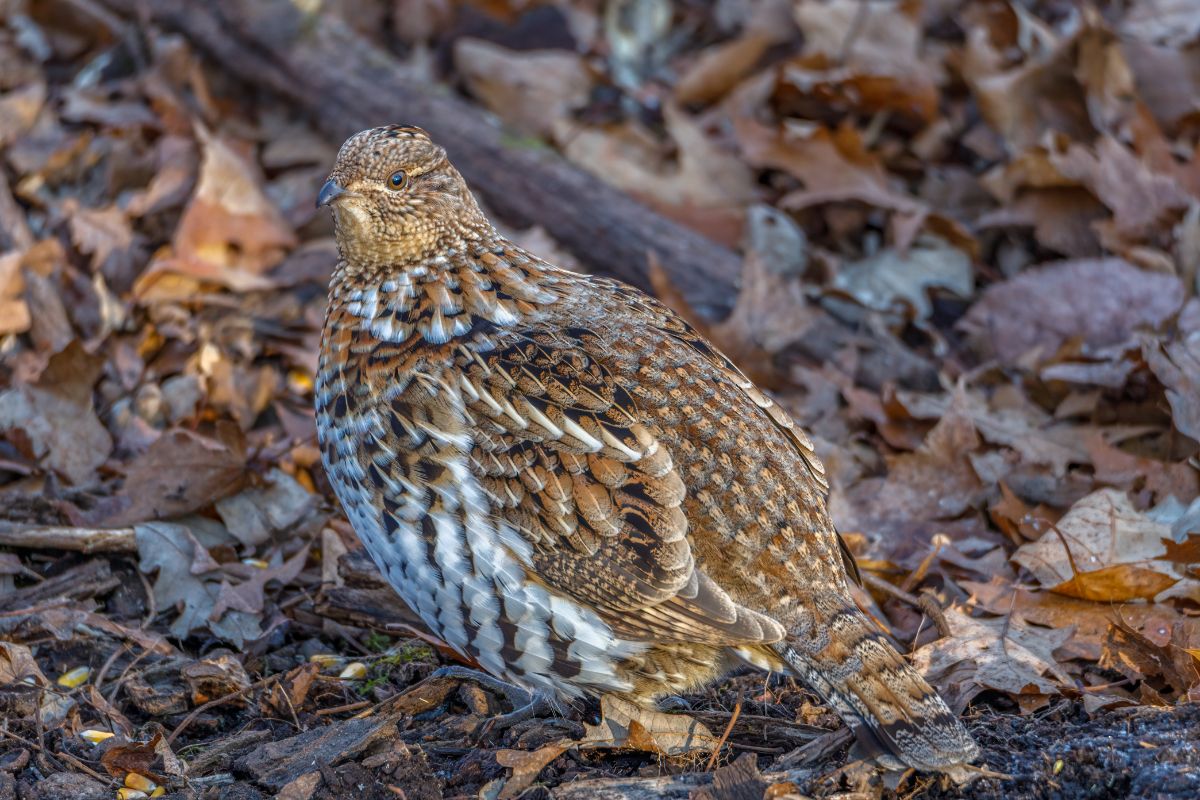
Ruffed grouse are game birds that build their nest at the base of a sump, rock, or tree in an area with excellent visibility to see any approaching predator. Before laying eggs, they pluck vegetation around the nest site and line their nest with it.
11. Savannah Sparrow
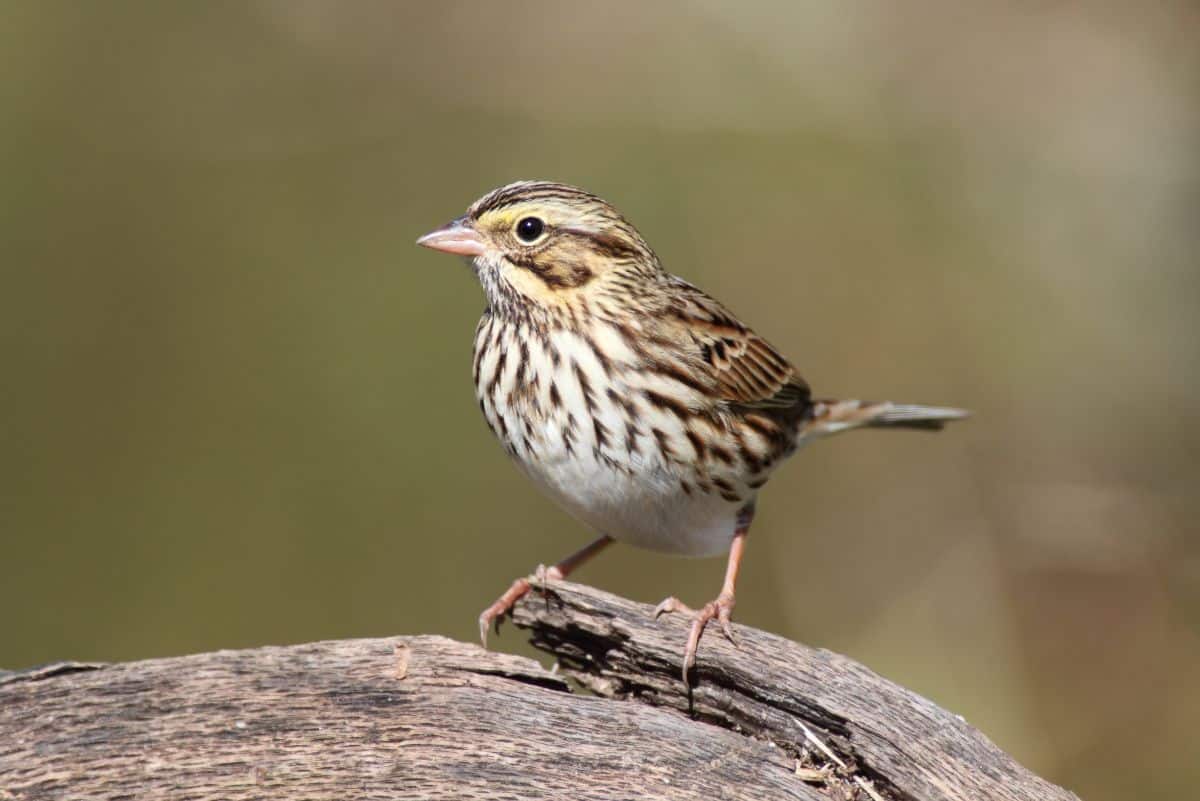
The savannah sparrow is among the most common in the sparrow family. These ground-nesting little birds lay between three and five eggs in a single brood per year. The female savannah sparrows do most of the incubation for 13 days before hatching.
12. American Wigeon
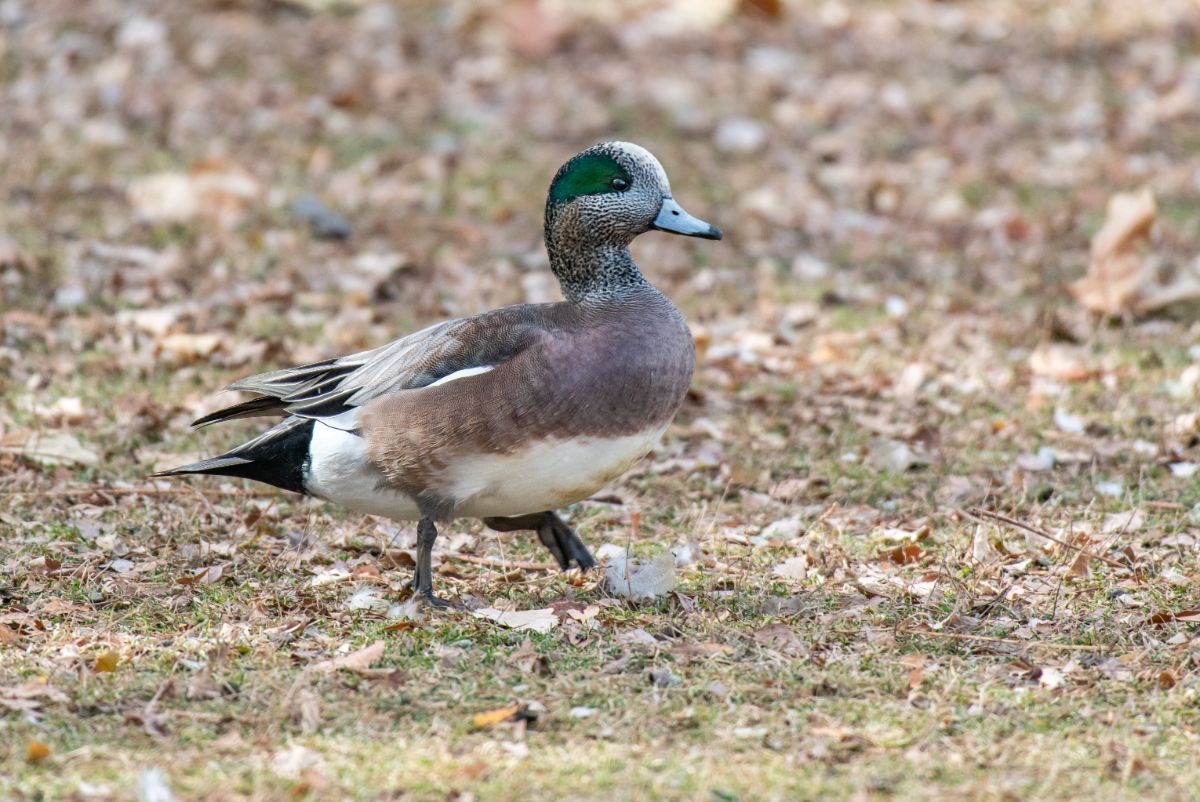
Unlike most other waterfowls, American Wigeons prefer nesting in sites on dry grounds relatively far from water. They often nest in fields and grasslands with tall shrubs and grasses. They make and line their depressions with mashed materials and grasses.
13. Lark Sparrow
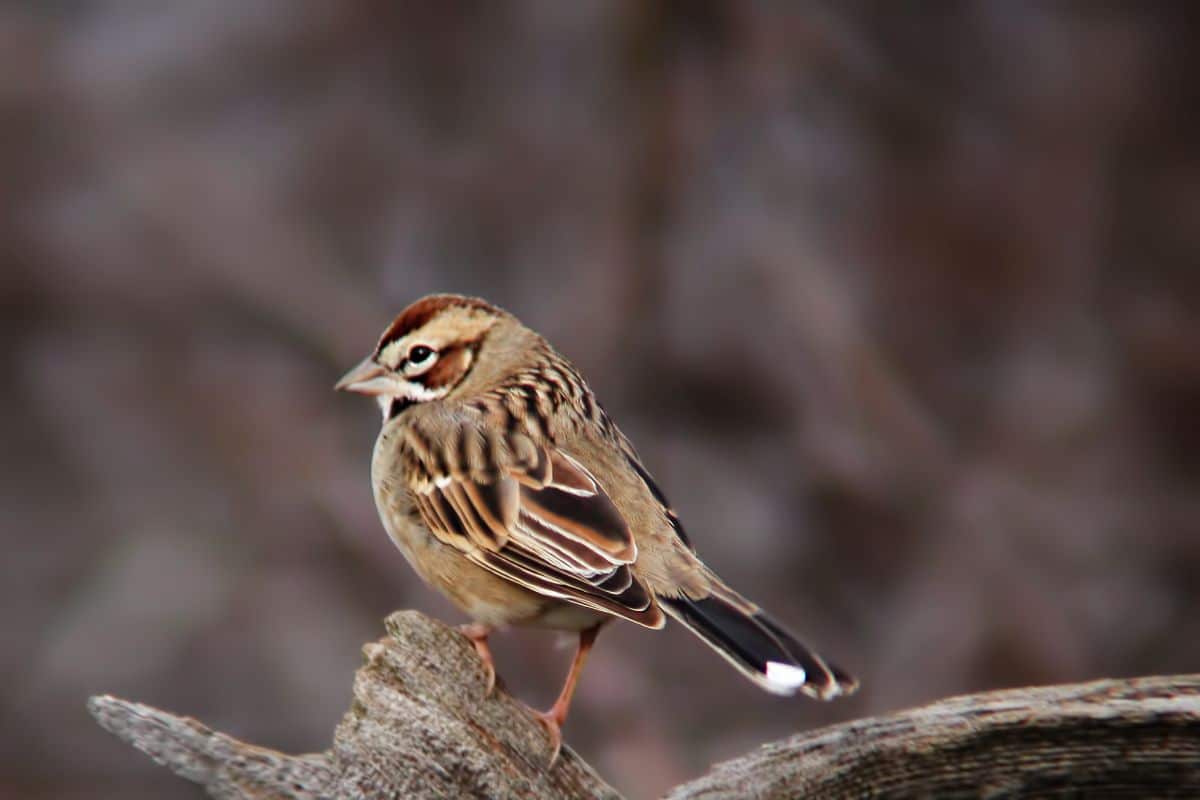
Lark sparrow is a common bird species known for building their nests on the ground. They construct their nests from grass and other vegetation they find around their surroundings. They prefer nesting in areas with a beehive of activities, such as farms and gardens.
14. Canada Goose
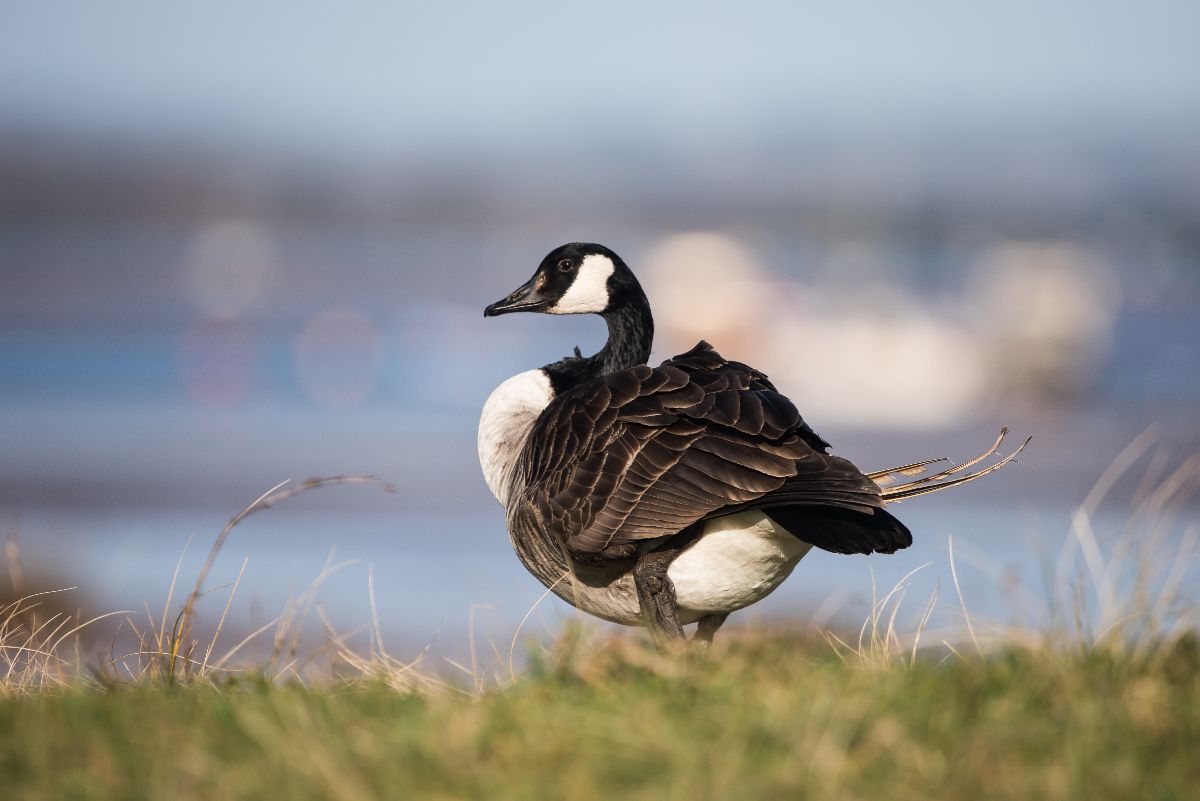
Canada geese are large ground-nesting birds that build their cup-like nests from grass, moss, lichens, and other plant materials. They love nesting near water, where they have a clear view of their surroundings.
15. Bobolink
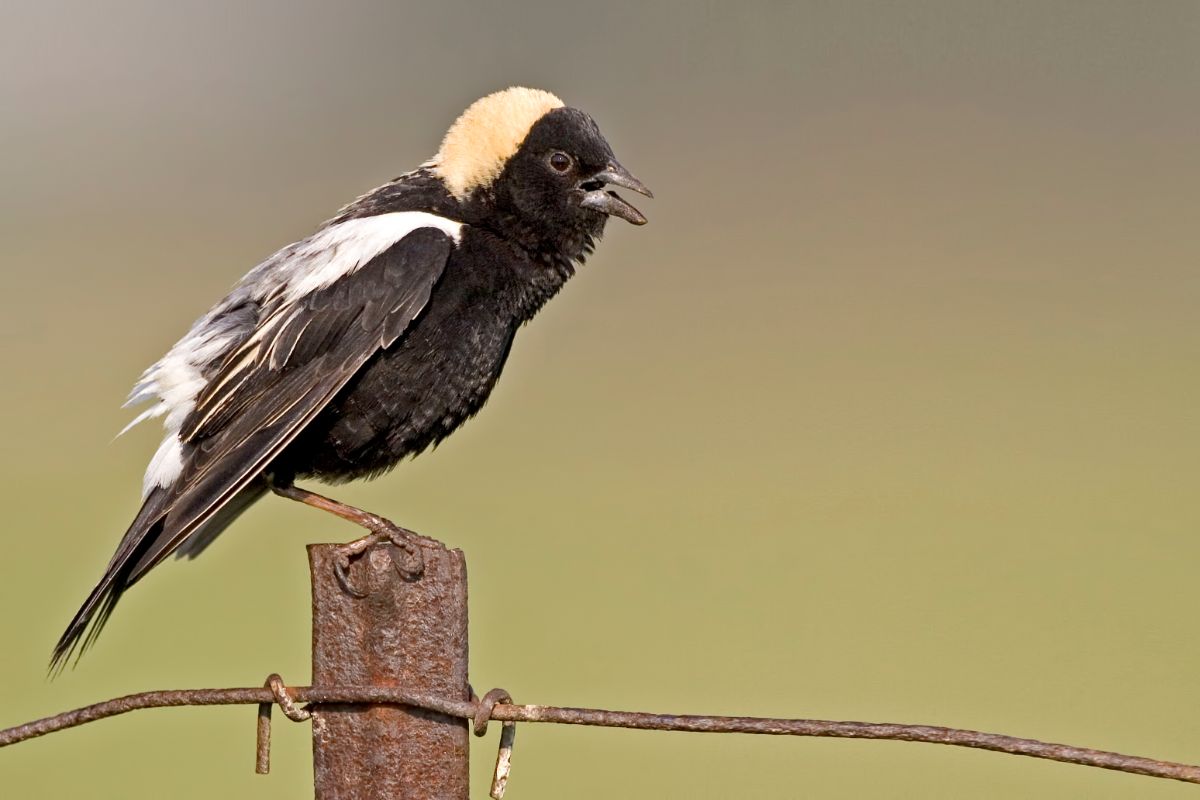
Bobolinks build their nests on the ground near grassy fields and open areas with short vegetation for cover. These little birds spend their winters in Central America and the southern United States and then fly north to breed in North America.
16. Waterfowl
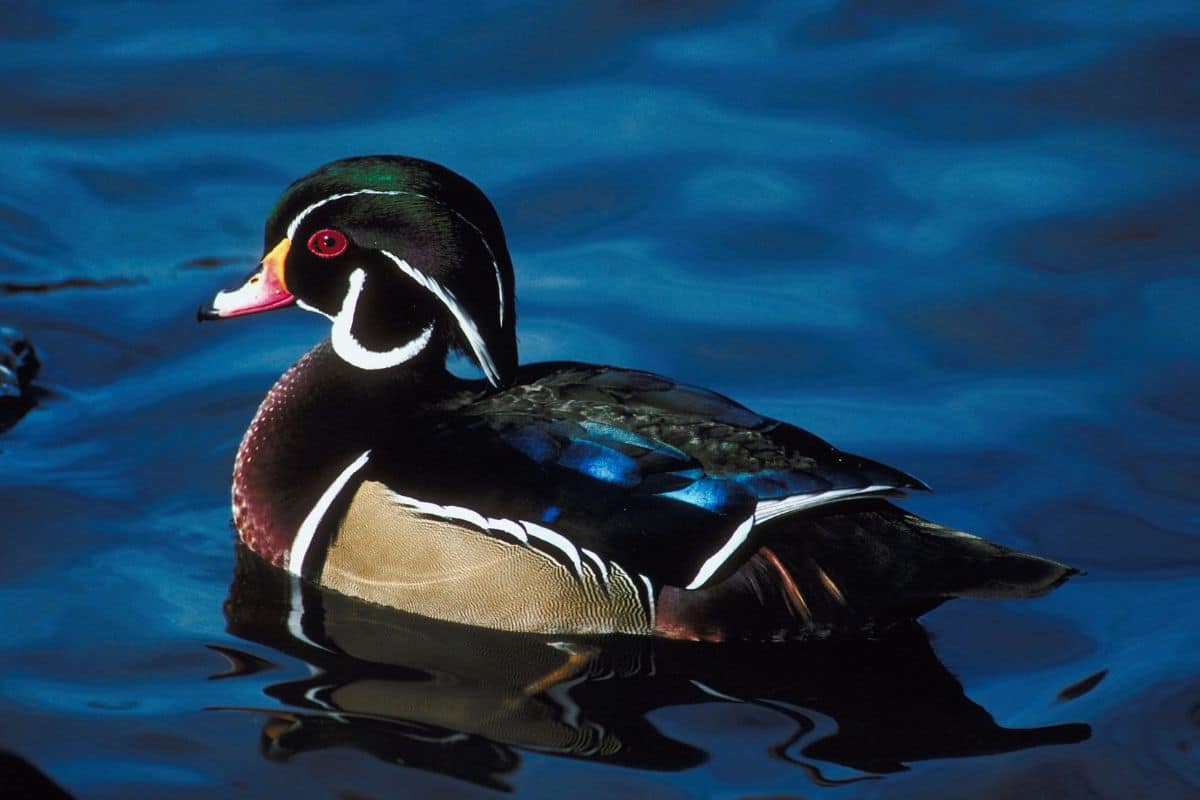
Like wading birds, waterfowls spend much of their time in and around water. They rely heavily on wetlands for food and nesting. If you see a group of waterfowl moving around an area, it indicates that it’s a healthy wetland.
17. Meadowlark
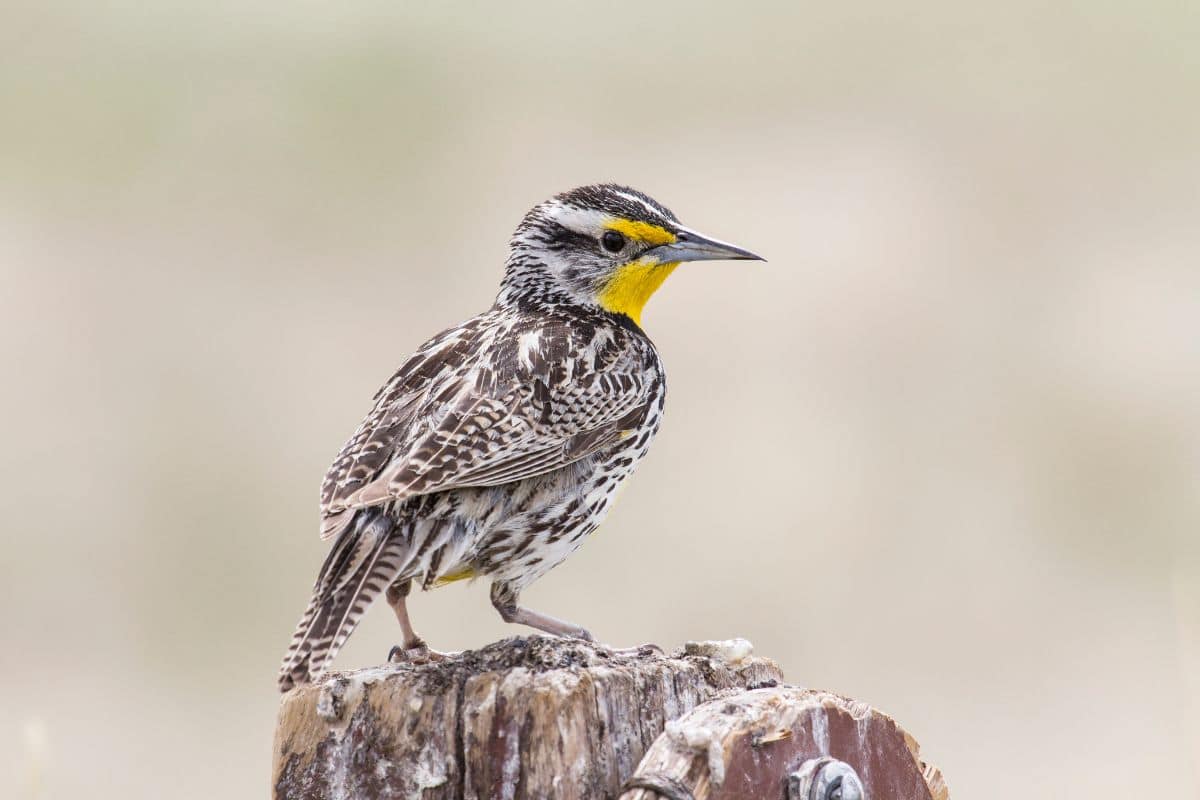
Meadowlark is a ground-nesting bird that prefers breeding in agricultural fields, grassy areas, and other lightly wooded habitats. They’re the most abundant members of their family in the northern part of America.
18. Sandhill Crane
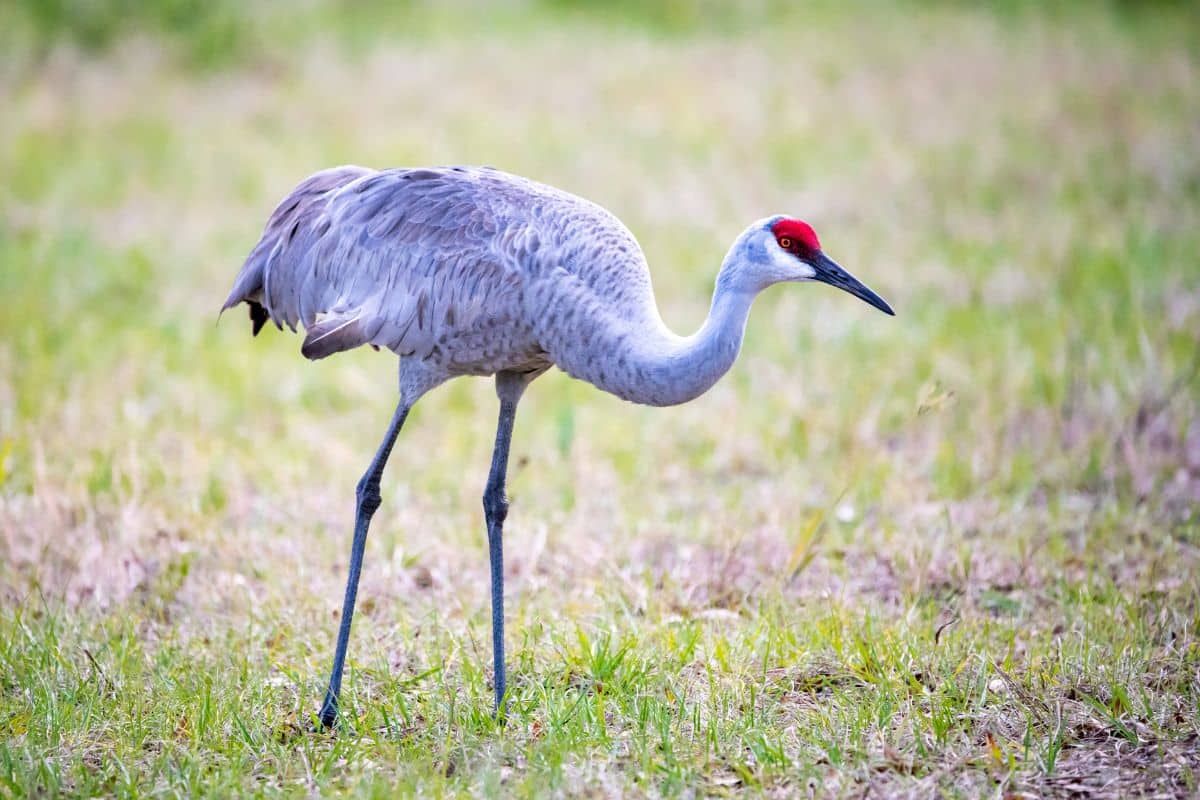
You will often find sandhill crane nests in wet meadows, marshes, small bogs, and other moist, isolated habitats, especially those with stagnant water. These long-legged birds build craft platforms from marsh vegetation like grass, burr reeds, bulrushes, sedges, and cattails.
19. Ovenbird Warbler
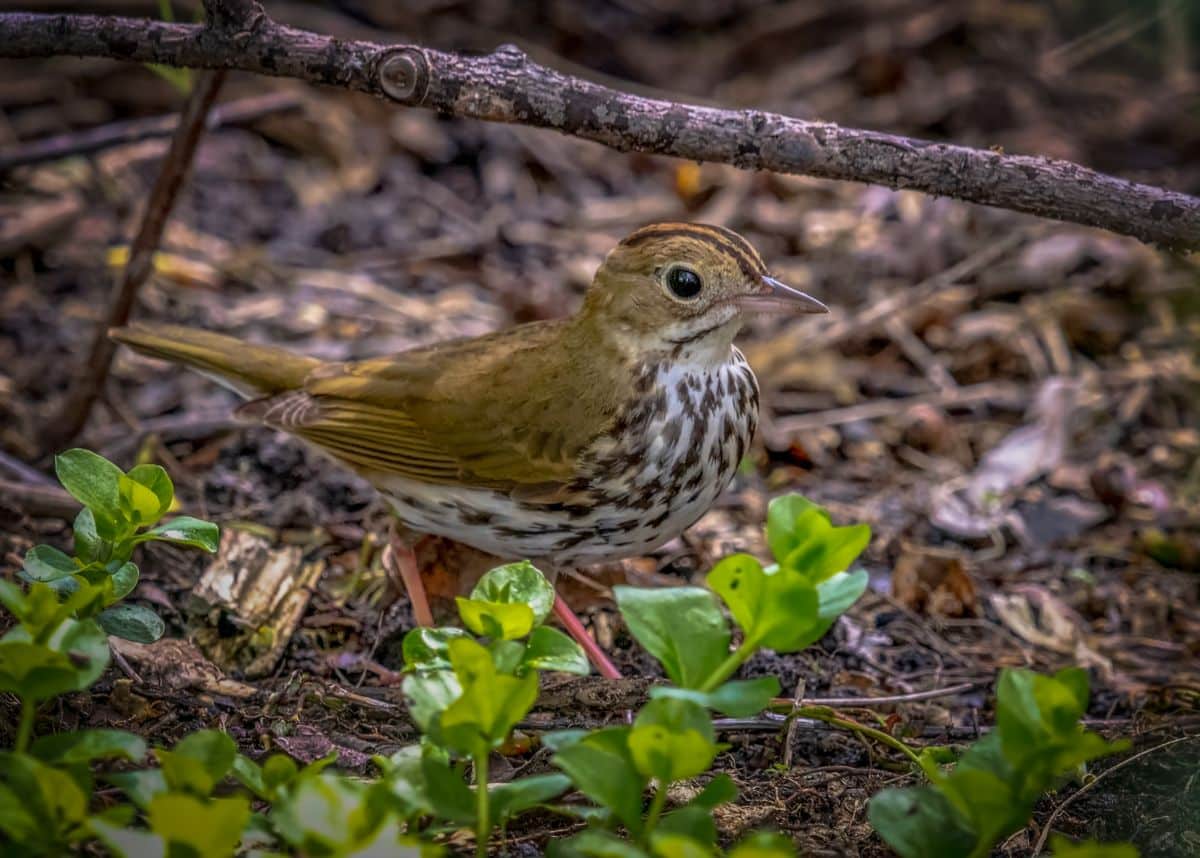
Ovenbird warblers are ground-nesting birds native to the eastern United States. They can live in the woodlands, forest edges, pastures, and fields with shrubs or nearby cover. These birds prefer nesting on the ground under or near dense vegetation.
20. Virginia Rail
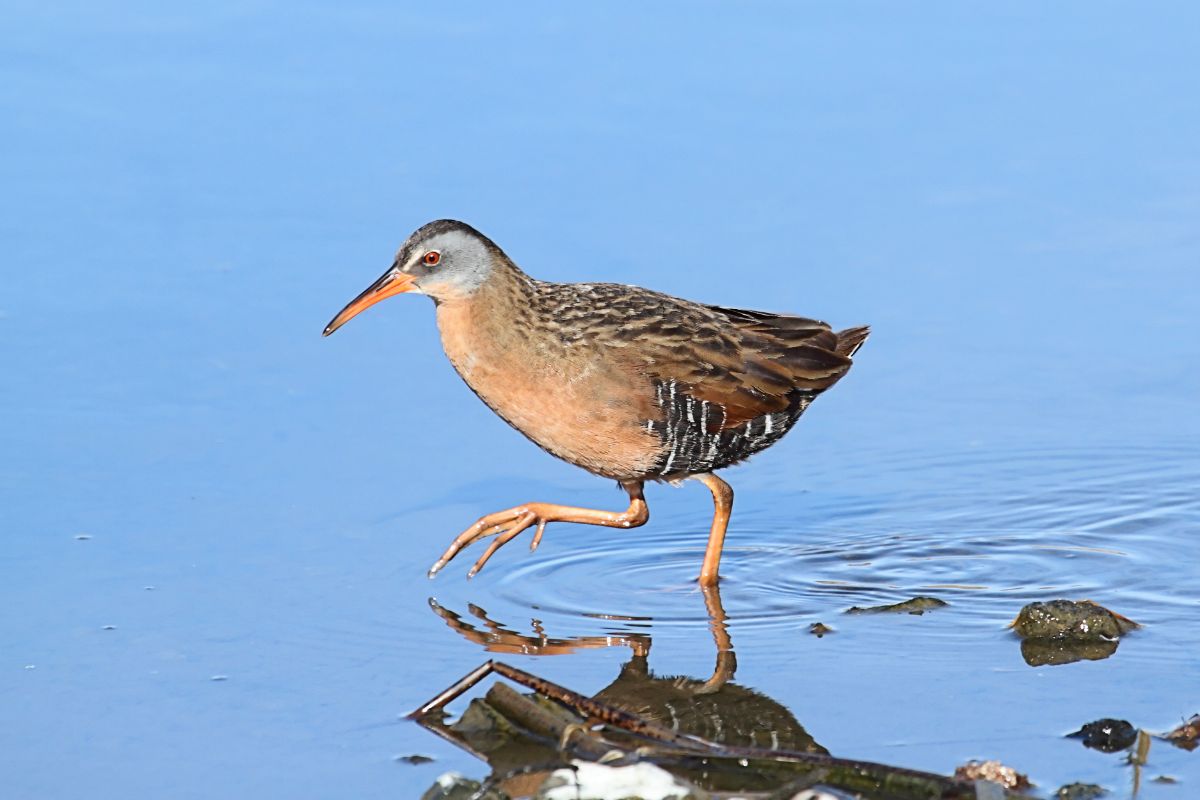
Virginia rail is a ground-nesting wading bird that creates a bowl-like nest woven from mashed materials, such as fine grass, cattails, and sedges. They are commonly found at the base of taller vegetation, such as bulrush and needle rush.
21. Wilson Warbler
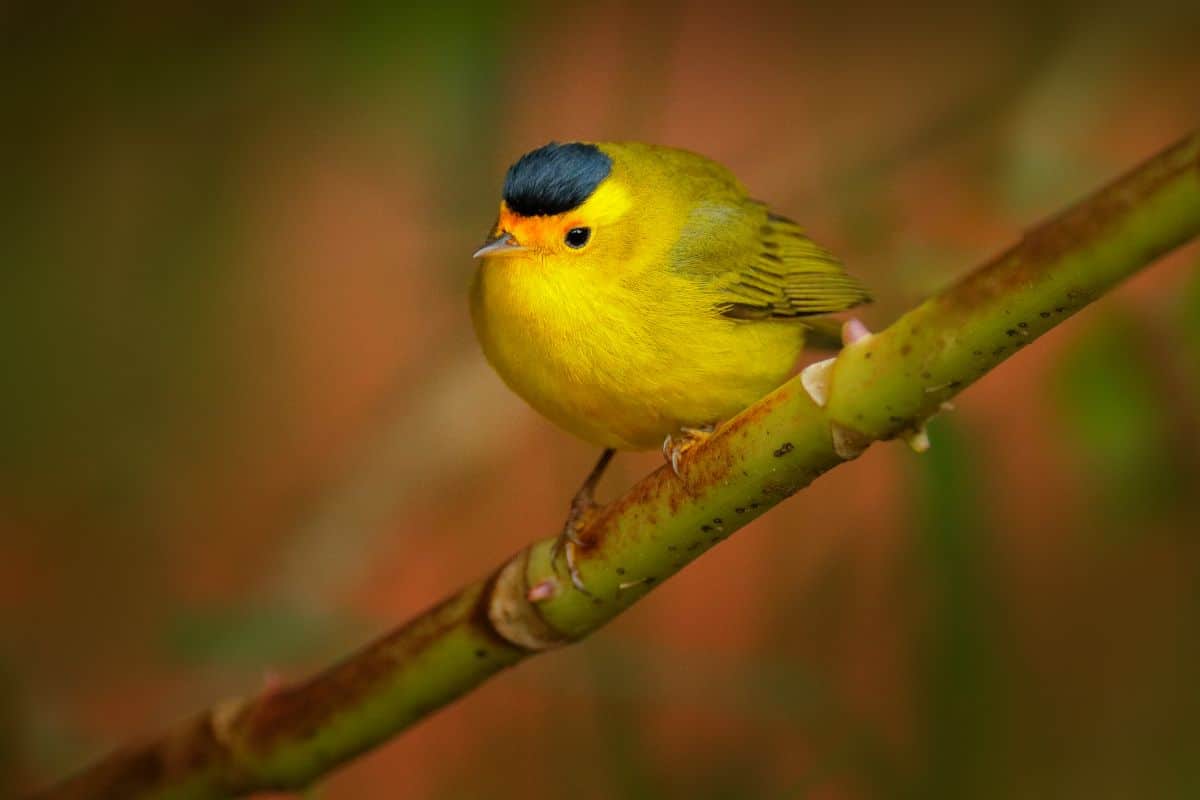
Wilson warblers live near streams and other water sources. They breed in the eastern United States. The females build nests with plants down, grasses, leaves, moss, and feathers they find on the ground. They then line the nests with fur from rabbits and mice.
22. Killdeer
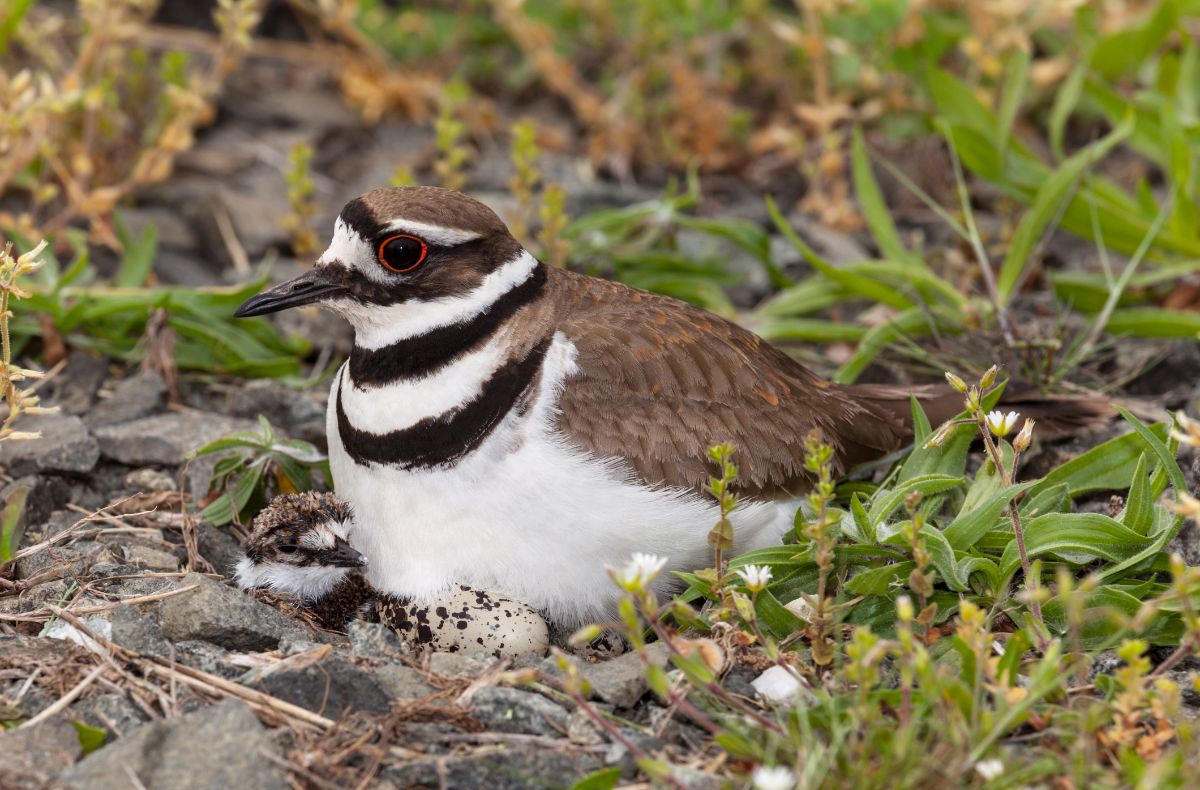
Killdeers are technically classified as shorebirds and are often found nesting in gravel far away from natural water bodies. The mating pair performs a scrape ceremony to pick a nesting site. They prefer nesting in gravel.
23. Northern Pintail
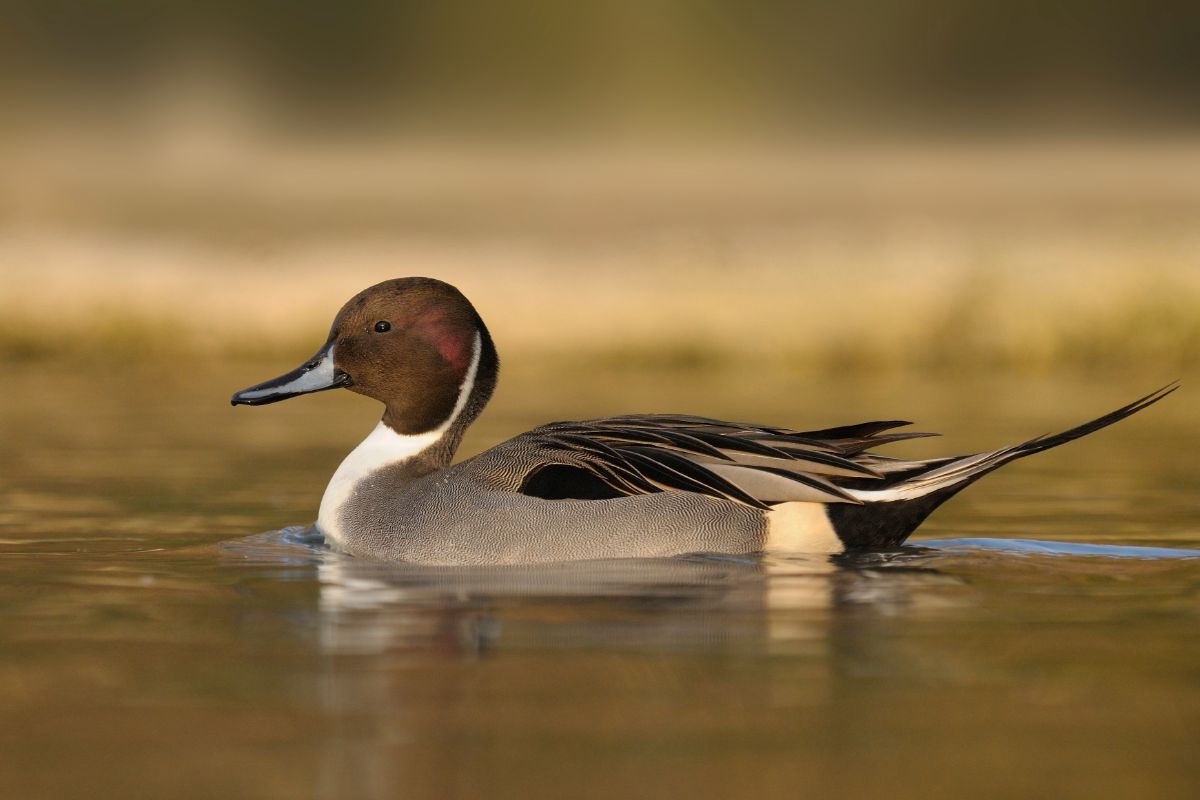
Northern pintails love nesting on dry, open land with lots of forbs and grasses, like a golf course or alfalfa fields. The females create a depression on the ground by pulling out the vegetation. They then lay their eggs there and eventually incubate.
24. American Avocet
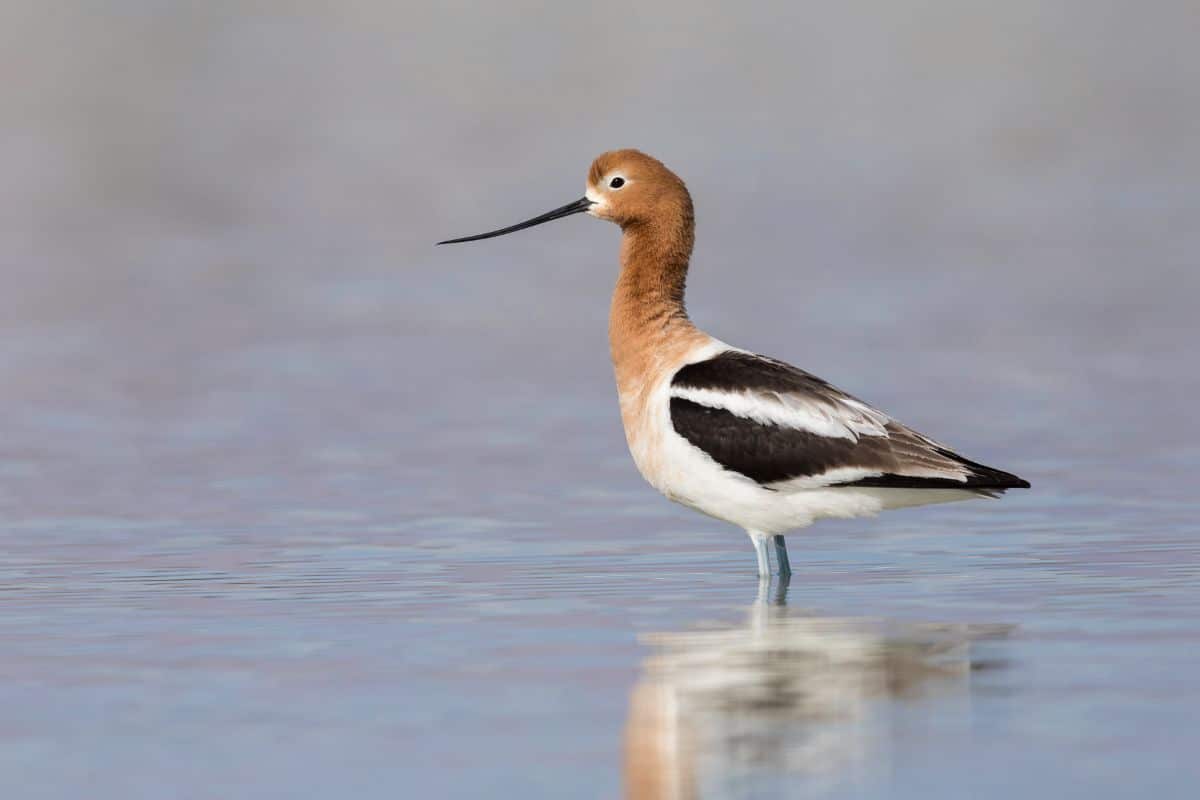
American avocets’ nests consist of a scrape, usually lightly lined with pebbles, feathers, grass, and other small objects. The nests are built on dikes and islands. Their eggs risk overheating because their nests are in areas with no shady vegetation.
25. Swan
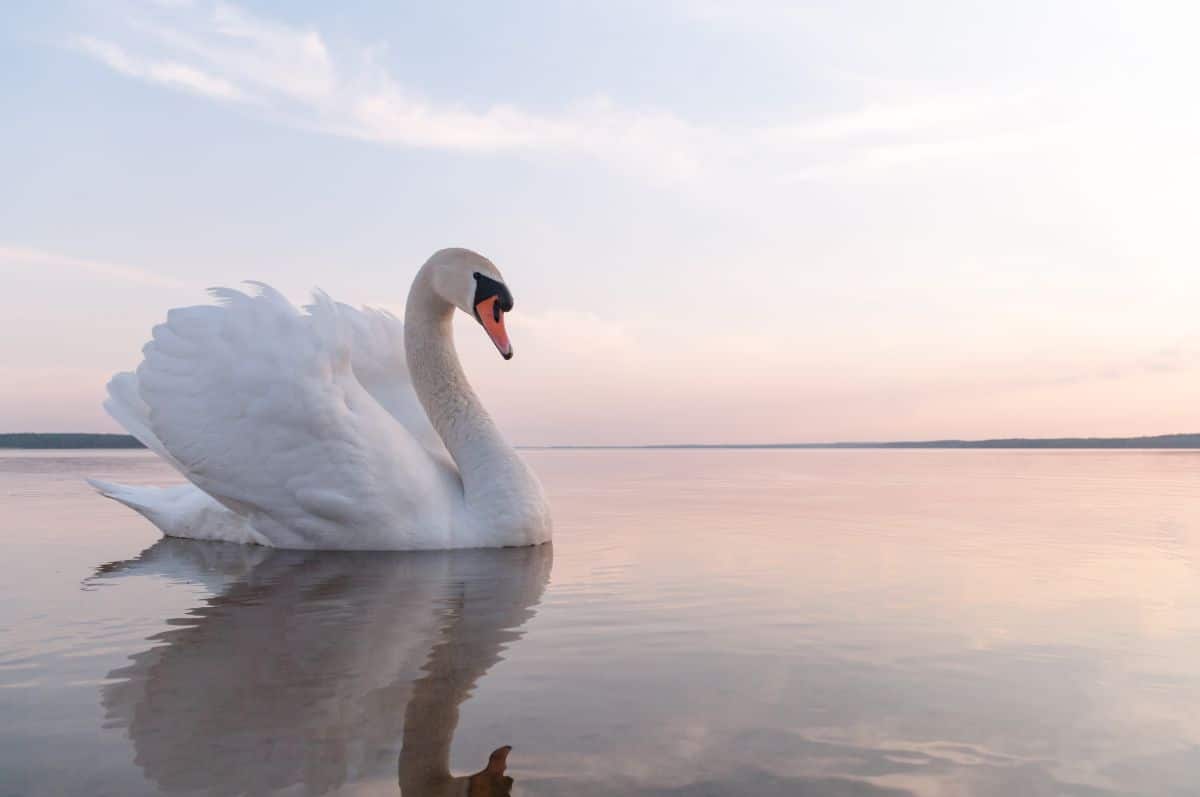
Swans are graceful waterfowls known to build their nests on the ground in fresher water marshes. They typically nest in reed beds or floating vegetation near fresh water. They also nest on salt marshes and sandbanks.
26. Sooty Tern
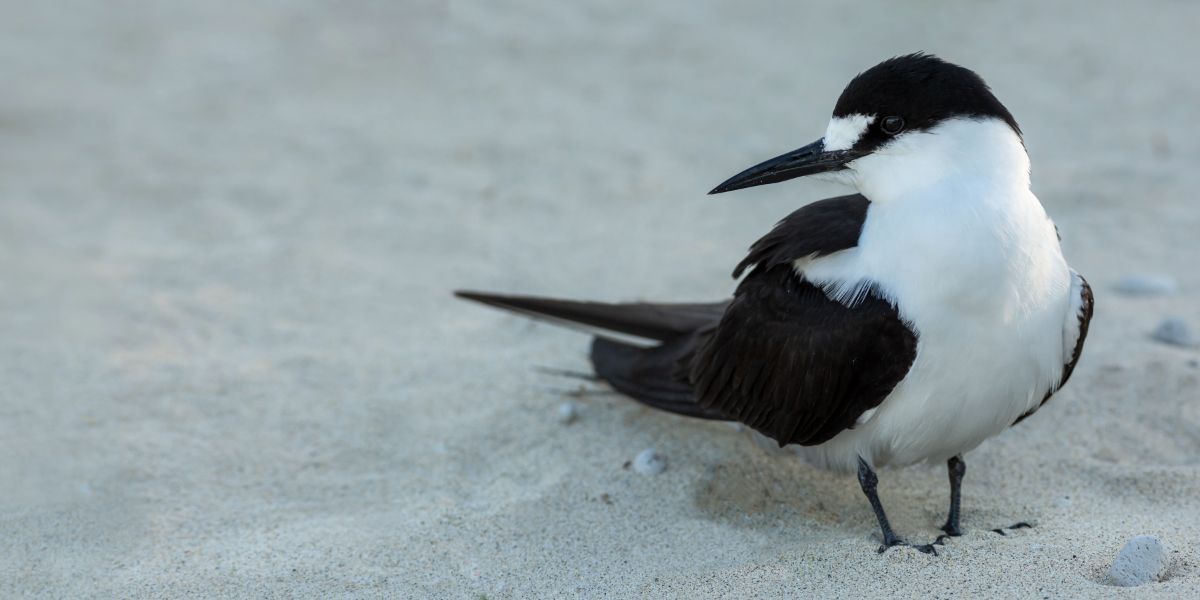
Sooty terns are typically large seabirds belonging to the family of terns, skimmers, and gulls. They have contrasting white underparts and dark upper parts. Their nests are shallow scrapers of soil often built in the open space and lined with a few leaves.
27. Green Kingfisher
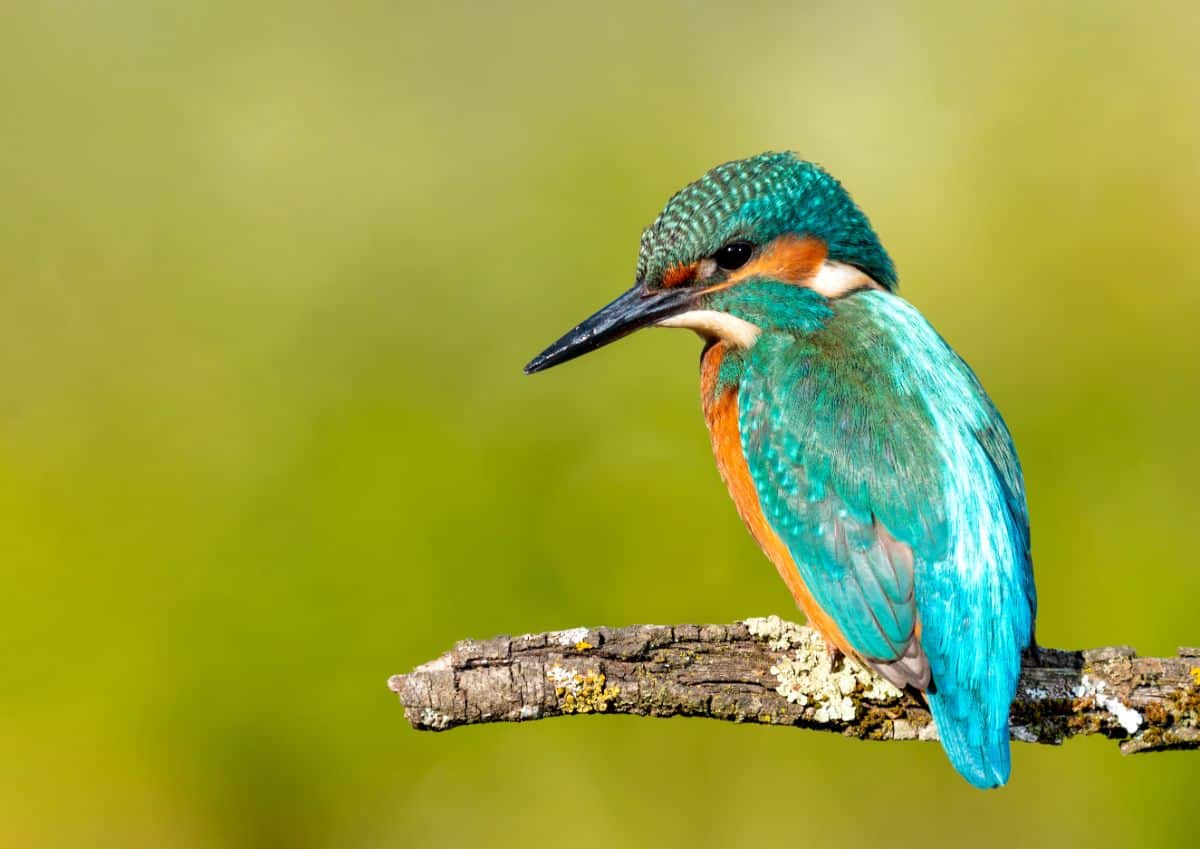
Green kingfishers are among the smaller species in the kingfisher family. These birds build horizontal tunnel-shaped nests along the river bank. Both male and female green kingfishers actively participate in nest building.
Wind Up
A large number of birds build their nests on the ground. Each creates a unique nest that can’t be confused with that of another bird.
While this nesting strategy tends to have considerable risks, the ground-nesting birds do all they can to camouflage their nests, especially from predators’ attacks.
